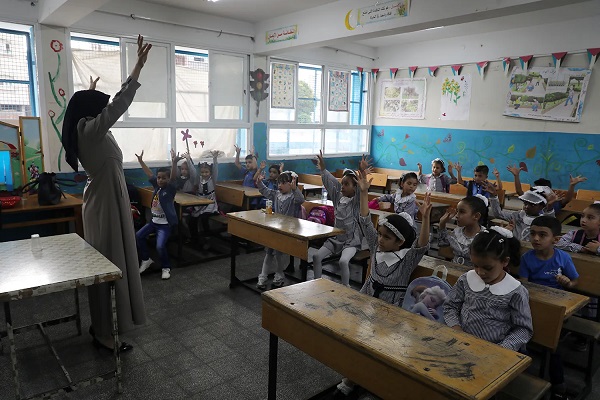Education
Red Deer Polytechnic researching clean energy systems, medical device innovation, and space and defence technologies

Red Deer Polytechnic continues partnership with universities to accelerate applied research
Red Deer Polytechnic (RDP) faculty and staff will grow their impact through applied research, thanks to a $27.3 Million investment by the Government of Alberta to post-secondary institutions through the Major Innovation Fund (MIF).
Red Deer Polytechnic is one of the post-secondary institutions that will continue to collaborate with the Universities of Alberta and Calgary during the next four years to accelerate research and commercialization because of the MIF funding. RDP will receive $800,000 from the MIF funding within three projects.
“We’re enthusiastic and eager to be collaborating with other post-secondary institutions to solve industry challenges in the medical devices, clean energy, and space and defense sectors,” says Dr. Tonya Wolfe, Associate Vice President of Applied Research. “Our team is focused on applying the state-of-the-art equipment and hands-on experience we have at Red Deer Polytechnic to commercialize new technologies in order to strengthen and diversify the economy. Cross-functional collaboration creates exciting outcomes, and industry will benefit by having researchers from universities, polytechnics, and colleges working together.”
The MIF investment will focus on projects in four areas. Red Deer Polytechnic is involved in three of those areas, including:
• Clean Energy – applied researchers from RDP’s Energy Innovation Centre (EIC) will be collaborating with U of A in Resilient and Clean Energy Systems. The team will support the university’s research with its rapid validation technology and information gained from the EIC’s Data Sharing Alliance.
• Medical Device Innovation – led by the U of C under medical devices theme (MEDICO), RDP’s Centre for Innovation in Manufacturing (CIM-TAC) will provide expertise to find solutions to fill the gap between clinicians and commercialization.
• Space and Defence Technologies – using the advanced additive manufacturing technology housed on campus, CIM-TAC will be assisting U of A researchers in the development of novel materials for the defence industry.
This investment also supports research and innovation within strategic areas as part of the Alberta Technology and Innovation Strategy, advancing the province’s competitive position in the development of research and technology.
“We are excited about the Government’s investment toward Alberta’s research and innovation priorities,” says Stuart Cullum, President of Red Deer Polytechnic. “Alberta’s polytechnics provide critical applied research capacity and industry relationships. The investment directed toward Red Deer Polytechnic, facilitated through the MIF program, supports our collaboration with partner institutions and ensures that we are all contributing more to the growth and diversification of Alberta’s economy.”
During 2022, 73 projects were initiated in the CIM-TAC for 57 companies and RDP staff conducted more than 1,300 engagements with industry representatives. RDP provides solutions to complex challenges in society and industry through applied research expertise in the areas of health technology, advanced manufacturing, clean energy integration and energy management, and social innovation. More information about the Government of Alberta’s MIF Funding announcement is available online.
Alberta
Schools should go back to basics to mitigate effects of AI

From the Fraser Institute
Odds are, you can’t tell whether this sentence was written by AI. Schools across Canada face the same problem. And happily, some are finding simple solutions.
Manitoba’s Division Scolaire Franco-Manitobaine recently issued new guidelines for teachers, to only assign optional homework and reading in grades Kindergarten to six, and limit homework in grades seven to 12. The reason? The proliferation of generative artificial intelligence (AI) chatbots such as ChatGPT make it very difficult for teachers, juggling a heavy workload, to discern genuine student work from AI-generated text. In fact, according to Division superintendent Alain Laberge, “Most of the [after-school assignment] submissions, we find, are coming from AI, to be quite honest.”
This problem isn’t limited to Manitoba, of course.
Two provincial doors down, in Alberta, new data analysis revealed that high school report card grades are rising while scores on provincewide assessments are not—particularly since 2022, the year ChatGPT was released. Report cards account for take-home work, while standardized tests are written in person, in the presence of teaching staff.
Specifically, from 2016 to 2019, the average standardized test score in Alberta across a range of subjects was 64 while the report card grade was 73.3—or 9.3 percentage points higher). From 2022 and 2024, the gap increased to 12.5 percentage points. (Data for 2020 and 2021 are unavailable due to COVID school closures.)
In lieu of take-home work, the Division Scolaire Franco-Manitobaine recommends nightly reading for students, which is a great idea. Having students read nightly doesn’t cost schools a dime but it’s strongly associated with improving academic outcomes.
According to a Programme for International Student Assessment (PISA) analysis of 174,000 student scores across 32 countries, the connection between daily reading and literacy was “moderately strong and meaningful,” and reading engagement affects reading achievement more than the socioeconomic status, gender or family structure of students.
All of this points to an undeniable shift in education—that is, teachers are losing a once-valuable tool (homework) and shifting more work back into the classroom. And while new technologies will continue to change the education landscape in heretofore unknown ways, one time-tested winning strategy is to go back to basics.
And some of “the basics” have slipped rapidly away. Some college students in elite universities arrive on campus never having read an entire book. Many university professors bemoan the newfound inability of students to write essays or deconstruct basic story components. Canada’s average PISA scores—a test of 15-year-olds in math, reading and science—have plummeted. In math, student test scores have dropped 35 points—the PISA equivalent of nearly two years of lost learning—in the last two decades. In reading, students have fallen about one year behind while science scores dropped moderately.
The decline in Canadian student achievement predates the widespread access of generative AI, but AI complicates the problem. Again, the solution needn’t be costly or complicated. There’s a reason why many tech CEOs famously send their children to screen-free schools. If technology is too tempting, in or outside of class, students should write with a pencil and paper. If ChatGPT is too hard to detect (and we know it is, because even AI often can’t accurately detect AI), in-class essays and assignments make sense.
And crucially, standardized tests provide the most reliable equitable measure of student progress, and if properly monitored, they’re AI-proof. Yet standardized testing is on the wane in Canada, thanks to long-standing attacks from teacher unions and other opponents, and despite broad support from parents. Now more than ever, parents and educators require reliable data to access the ability of students. Standardized testing varies widely among the provinces, but parents in every province should demand a strong standardized testing regime.
AI may be here to stay and it may play a large role in the future of education. But if schools deprive students of the ability to read books, structure clear sentences, correspond organically with other humans and complete their own work, they will do students no favours. The best way to ensure kids are “future ready”—to borrow a phrase oft-used to justify seesawing educational tech trends—is to school them in the basics.
Business
Why Does Canada “Lead” the World in Funding Racist Indoctrination?
-

 Automotive10 hours ago
Automotive10 hours agoPoliticians should be honest about environmental pros and cons of electric vehicles
-

 Agriculture2 days ago
Agriculture2 days agoWhy is Canada paying for dairy ‘losses’ during a boom?
-

 Frontier Centre for Public Policy2 days ago
Frontier Centre for Public Policy2 days agoCanada Lets Child-Porn Offenders Off Easy While Targeting Bible Believers
-

 Agriculture2 days ago
Agriculture2 days agoCanadians should thank Trump for targeting supply management
-

 Business2 days ago
Business2 days agoCanada Hits the Brakes on Population
-

 Business2 days ago
Business2 days agoWhite House declares inflation era OVER after shock report
-

 Daily Caller1 day ago
Daily Caller1 day ago‘Almost Sounds Made Up’: Jeffrey Epstein Was Bill Clinton Plus-One At Moroccan King’s Wedding, Per Report
-

 Crime1 day ago
Crime1 day agoBrown University shooter dead of apparent self-inflicted gunshot wound











